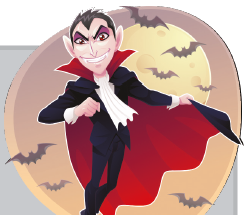The Return of Vampires
They’re full of life, rebellious and fight for blood. This description suits not only the character in contemporary vampire novels but also many of the readers. Some teens are addicted to vampire stories, but why? Is it the plot or the characters?
The modern fashion for vampire stories dates back to the 1970s, with the publication of Interview With A Vampire, a novel by the American writer Anne Rice. The novel and its sequels are known as The Vampire Chronicles, and around 80 million copies have been sold around the world. Modern vampire stories differ in that some of the vampires are likeable characters. For instance, the main character, Louis, needs to drink blood to survive but doesn’t want to hurt people. There are two different sides to his personality and many teenagers can identify with this.
The most successful vampire books of the last decade are the four novels of the Twilight series, by Stephen Meyer. The first novel, Twilight, was written in 2003. When the author finished the final chapter, she kept going. Then Twilight ended up a four-part series and have since been adapted to the big screen.
Even though the success of Twilight marks a milestone in 21st-century film making, the popularity of vampire stories is nothing new. In 1897, the Irish writer, Beam Stoker wrote a novel called Dracula. Twenty-five years later, the film director Max Schreck made the first vampire film, Nosferatu.
Horror stories have a particular appeal to teenagers. But teenagers also like important and challenging themes; like the fight between good and evil. These issues are interesting for teenagers, who are just starting to face life’s big questions about love and morality.

